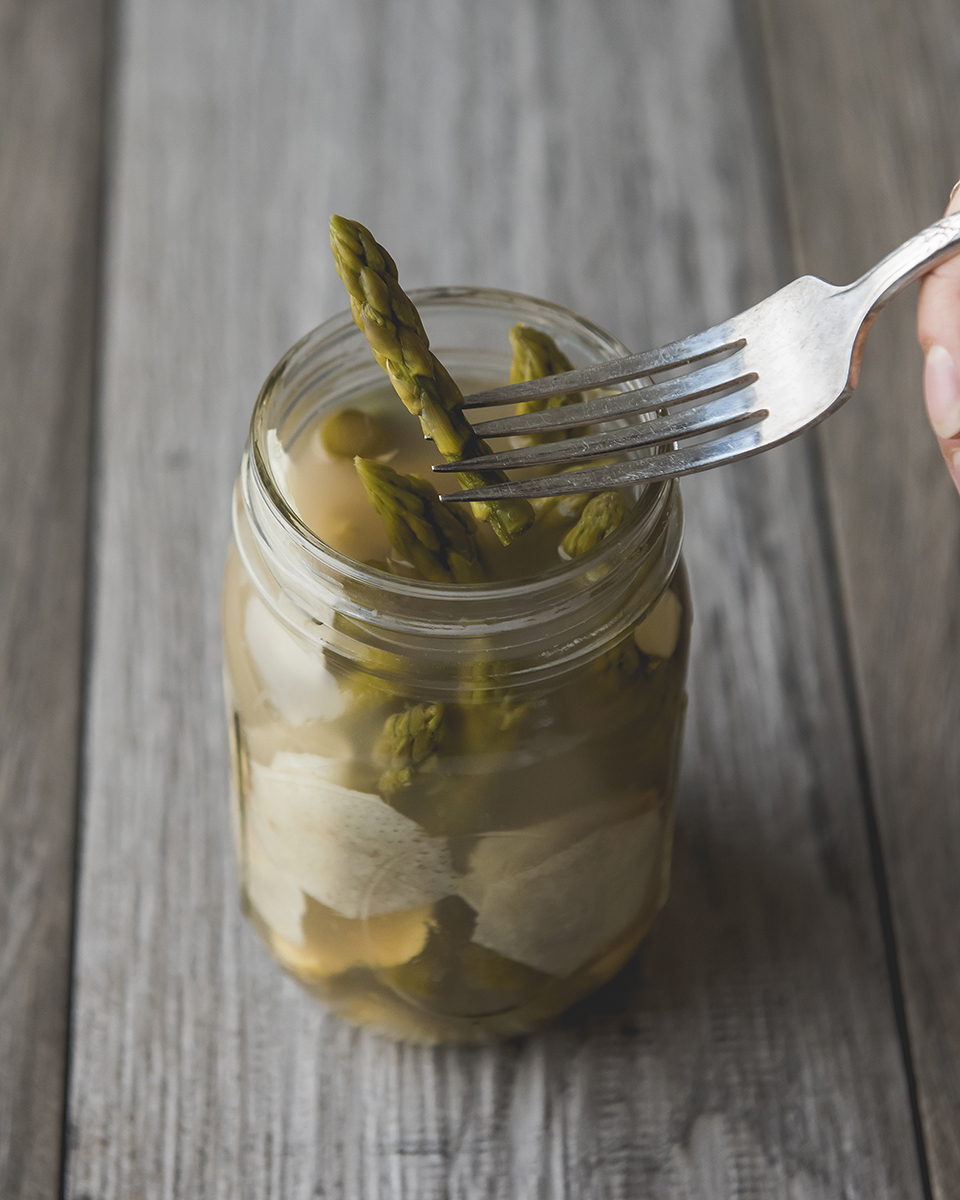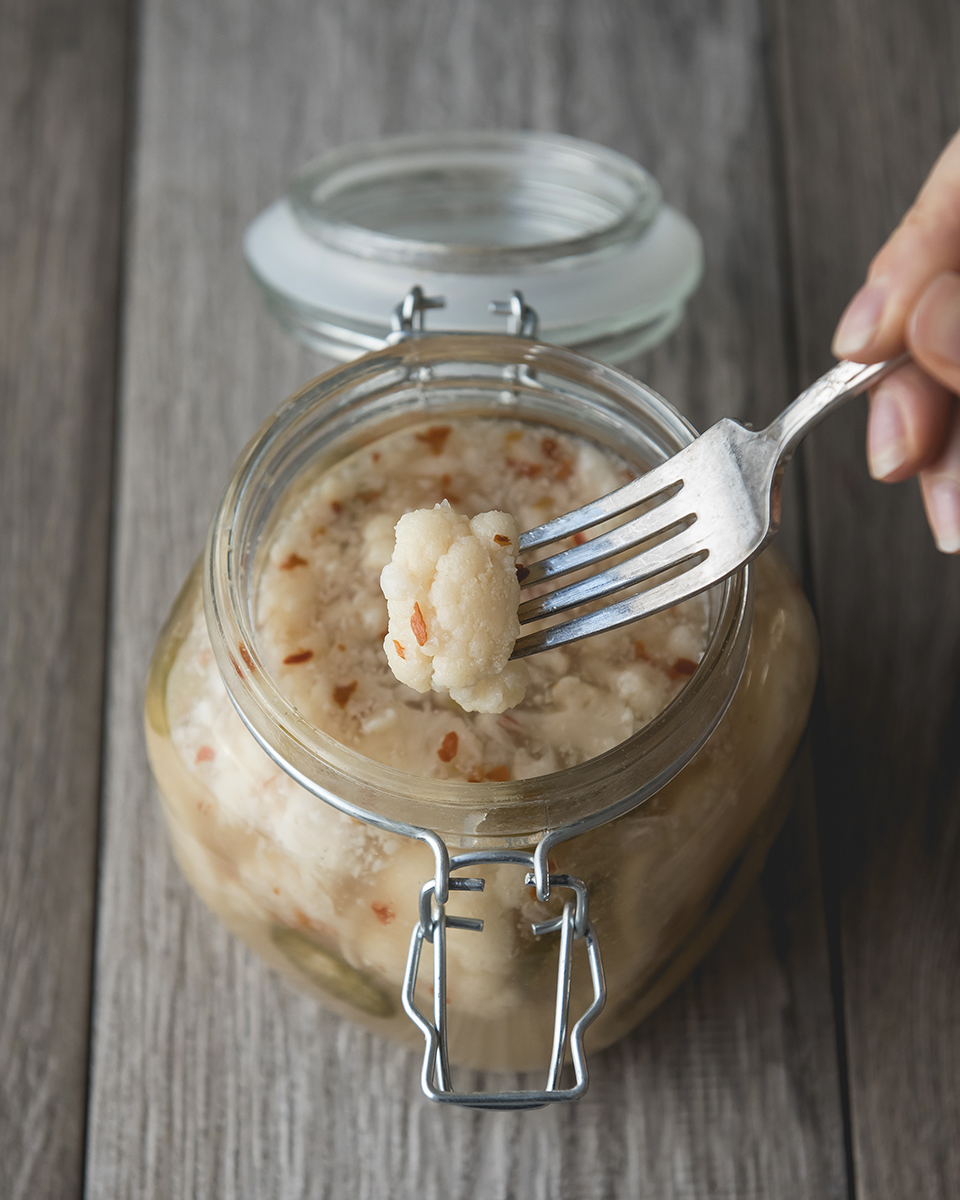
How To Make Healthy Fermented Probiotic Pickles
Before the modern wonders of refrigeration and even before canning, the tradition of lacto-fermenting was one of the few food preservation techniques that helped people preserve vegetables during harsh winter months. There’s a reason why people now are embracing old-time traditions like herbalism, foraging, DIY beauty, and fermentation. We’ve discovered that many of these traditions are healing practices for your body, soul, and spirit.
Culturing your own veggie pickles is still as trendy as ever and incredibly wise as most store-bought pickles are completely void of the helpful probiotic cultures, but full of sugar and other unwanted additives.
By taking grandmother’s standard fermented dill pickled cucumber recipe and replacing the base with a superfood, like asparagus, beets, and cauliflower, you’ll ferment your way to a more nutritionally balanced pickle. By preparing these tasty recipes, you’ll learn the basics of lacto-fermentation, or fermenting vegetables in a brine (salt solution).
It works so deliciously well since the bad bacteria can’t tolerate the salty pickling solution that still allows beneficial Lactobacillus bacteria to flourish, and later turn vegetable sugars into lactic acid, a natural preservative. This process also increases the nutritive values of the vegetables and gives them a pleasing texture.
To prevent molding during the 3- to 7-day fermentation process, be sure the vegetables are well submerged below the brining liquid line in a glass container, by using an additional heavy bowl, lid, or even fermentation weights. Shop for [easyazon_link identifier=”B01DJVVORE” locale=”US” tag=”gardcoll03-20″]fermentation kits[/easyazon_link] if you catch the pickling bug and want to pimp out your kitchen with more professional tools. In the meantime, try these fermented pickles that have the double benefit of probiotic cultures mixed with superfoods.
Cleansing
Pickled Asparagus with Turmeric, Cloves and Ginger
Asparagus is considered a top cleansing food– along with turmeric– since it contains a wide range of anti-oxidant compounds, like sarsasapogenin, that work to stop inflammation and restore body balance.
Makes (1) quart-sized jar of pickled asparagus.
Ingredients
- 2 tablespoons thinly sliced turmeric root or 1 tsp ground turmeric
- 2 tablespoons thinly sliced ginger root
- 1 tablespoon kosher salt
- 1 tablespoon whole cloves (or less, if you want less of this flavor)
- 1 tablespoon mustard seeds
- 1 pound asparagus spears, end trimmed
Method
- Place the turmeric, ginger, salt, cloves, and mustard seed in a large glass bowl. Add ½ cup room temperature water and whisk well to allow the salt to dissolve. Add the asparagus spears and cover with enough additional water to cover the asparagus by about 2-inches. Place a smaller bowl on top so that the asparagus along with the flavorings are completely submerged.
- Cover the bowl with a clean kitchen towel and place in a warm spot on the kitchen counter, allowing the vegetables to ferment for 5 to 7 days. Check on the vegetables in the bowl from time to time to be ensure that the brine covers the vegetables completely to avoid any molding that may form on the surface. Taste after 3 days to test for desired tanginess. Transfer to a large mason jar and refrigerate when you’re satisfied with the taste.
Heart Protective
Hibiscus Pickled Beets with Orange Rind
There’s no coincidence that blood-red beets are heart healthy. Their highly heart-protective red pigments, called betalains, is responsible for their gem-like color and anti-oxidant benefits. Betalains also happen to be very easily absorbed (they are bio-available) compared to other compounds that are touted for health like resveratrol.
Below recipe makes 1 quart jar pickled beets
Ingredients
- 2 hibiscus tea bags
- 2 small beets, about 1 pound, peeled, thinly sliced
- 1 orange, peel remove
- 1 cinnamon stick
Method
- Brew the tea in 1.5 quarts of water according to the package instructions. Add the beets and salt and cool to room temperature in a large glass bowl. Add the orange peel and cinnamon stick. Place a smaller bowl on top so that the beets along with the flavorings are completely submerged.
- Cover the bowl with a clean kitchen towel and place in a warm spot on the kitchen counter, allowing the vegetables to ferment for 5 to 7 days. Check on the vegetables in the bowl from time to time to be ensure that the brine covers the vegetables completely to avoid any molding that may form on the surface. Taste after 3 days to test for desired tanginess. Transfer to a large mason jar and refrigerate when you’re satisfied with the taste.
Cancer Fighting
Spicy Pickled Cauliflower with Jalapeño and Radishes
Both cauliflower and spicy chilis like jalapeño contain unique cancer busting compounds in the form of sulforaphane, a sulfur compound that gives cauliflower it’s odor, and capsicum, which gives chili its eye-watering heat.
Below recipe makes (2) 1-quart jars of pickled cauliflower.
Ingredients
- 2 jalapeños, thinly sliced
- 2 tablespoons kosher salt
- 1/2 teaspoon red chili flakes
- 1/2 head medium cauliflower, cut into florets
- 4 radishes, thinly sliced
Method
- Place the jalapeños, salt, and chili flakes in a large glass bowl. Add 1/2 cup room temperature water and whisk well to allow the salt to dissolve. Add the cauliflower florets and radishes. Cover with enough additional water to cover the cauliflower by about 2-inches. Place a smaller bowl on top so that the asparagus along with the flavorings are completely submerged.
- Cover the bowl with a clean kitchen towel and place in a warm spot on the kitchen counter, allowing the vegetables to ferment for 5 to 7 days. Check on the vegetables in the bowl from time to time to be ensure that the brine covers the vegetables completely to avoid any molding that may form on the surface. Taste after 3 days to test for desired tanginess. Transfer to large mason jars and refrigerate when you’re satisfied with the taste.
Interested in cooking with superfoods? Check out our story about foods that help alleviate anxiety.




































